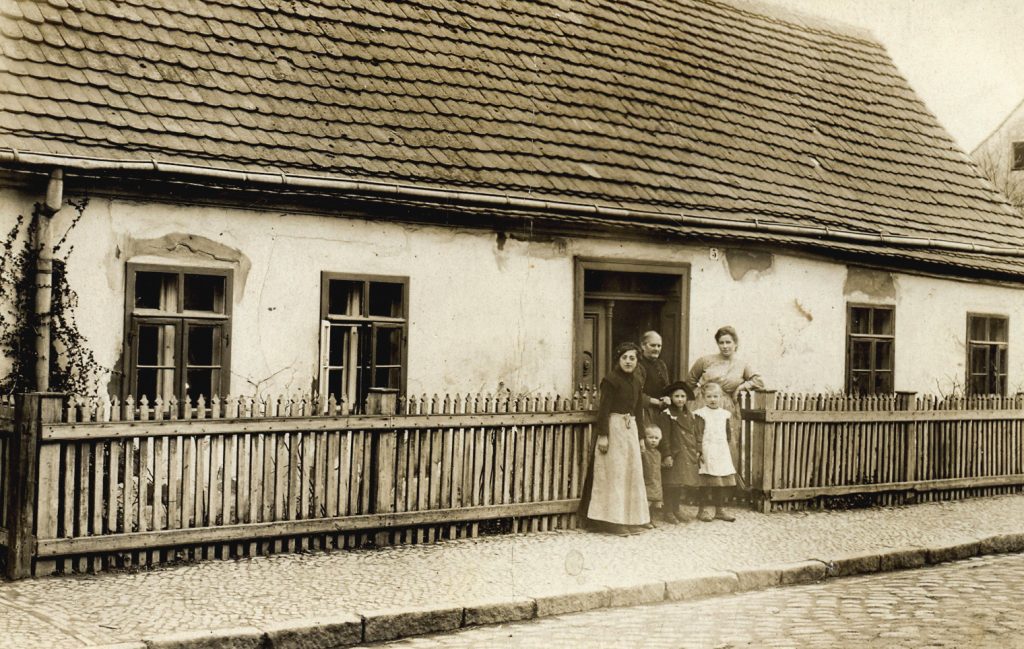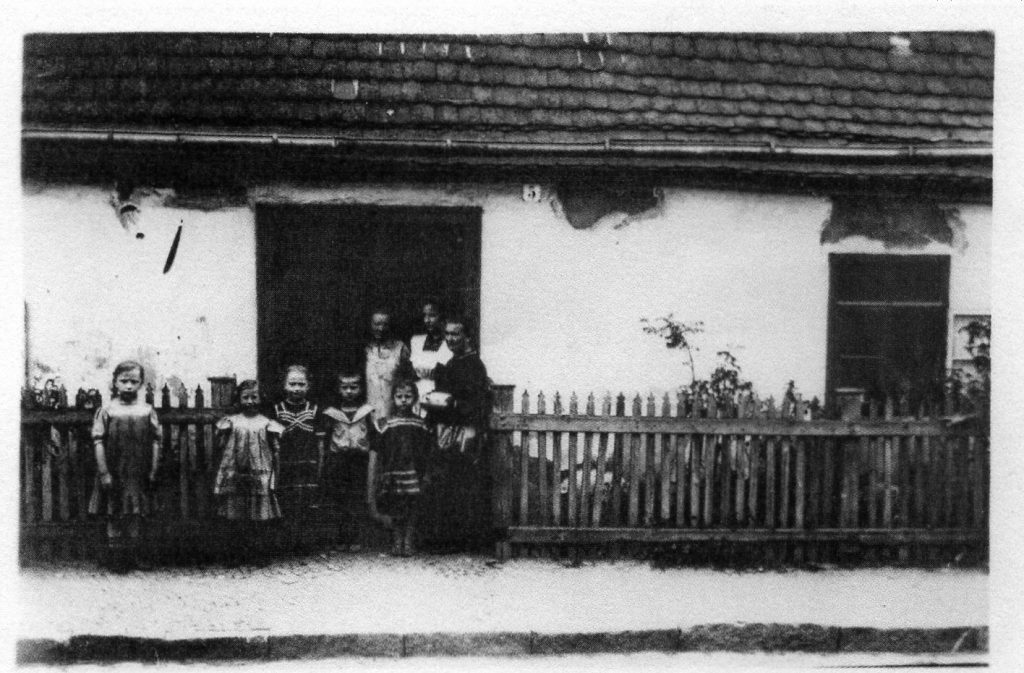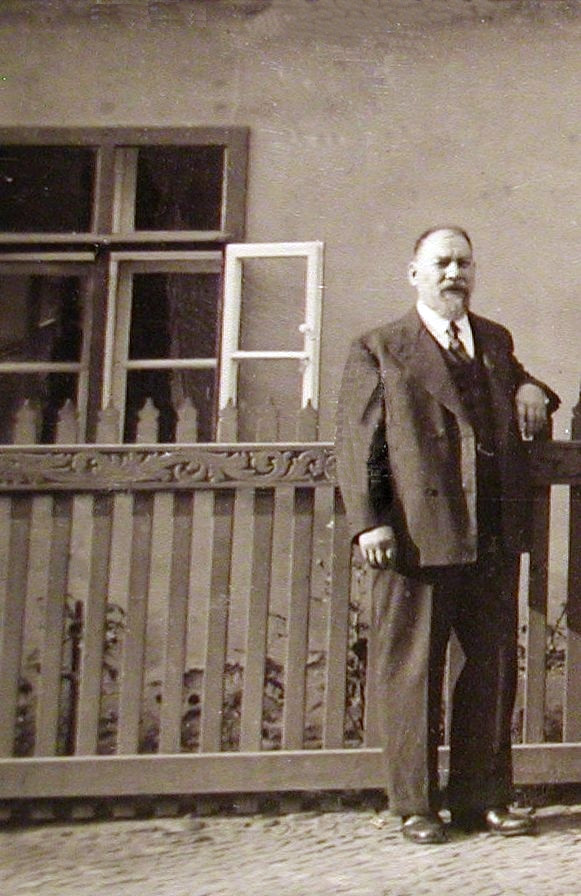[overview] [last station] [next station]
August Mattausch came to Teltow in 1906 as a young artist of 29 years, when the construction of the Teltow Canal (Teltowkanal) was just being finished here and the great boom of our town was still to come.
Newly wed, he moved into the old colonist house at Alte Potsdamer Str. 5, built in 1731/32 and today one of the oldest houses in town.
At first Mattausch had ambitions to design decorative porcelain and tableware in the newly founded porcelain factory. However, following the trend of the time, soon only industrial porcelain was produced here for the electrification of the Reich. Mattausch found employment with the Lohse company in Teltow as a designer of flakons, powder boxes, pill containers and other products.
In 1910 he was commissioned to redesign the interior of the Andreaskirche. To him we owe the ornamental flat carvings on the pews and cheeks, as well as on the pillars, pulpit, and baptistery, which are reminiscent of Art Nouveau.
As early as 1912, the Teltow coat of arms was newly created under his hands. After consultation with a renowned heraldist, the design of the coat of arms now again presented elements featured in the town seal as early as in the 13th century: the red eagle on a silver shield, the Ascanian star, and oak leaves.
On the occasion of the centenary of the Battle of the Nations against Napoleon’s army in 1913, the up-and-coming city honoured the fallen Teltowers with the war memorial on the so-called Zickenplatz that is still preserved today. The memorial was designed by August Mattausch. He was also actively involved in the selection of the rock material. And certainly he was responsible, too, for the mythological accessories, namely the Greek helmet, the Medusa head with sword and lance, and, of course, the table with the names of the fallen.
August Mattausch died aged 67 on 12 July 1945. In 2010, on the 65th anniversary of his death, the town of Teltow renamed the Bürgerpark August-Mattausch-Park. His old residence is now a listed building and houses an atelier.



